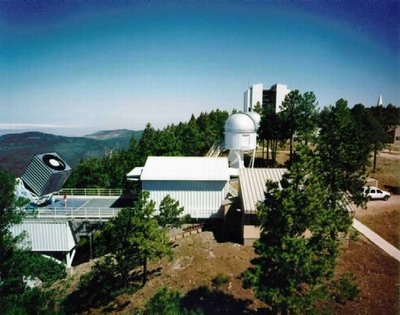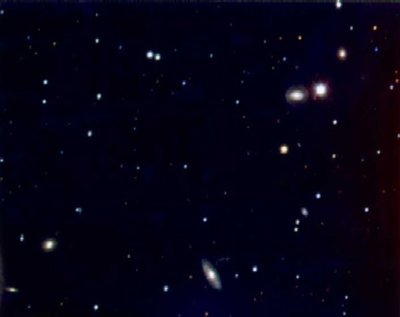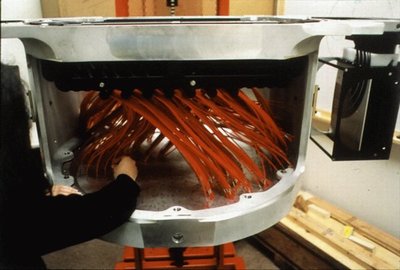June 8, 1998
University of Washington plays key role in space map project
The University of Washington is a key player in an ambitious new effort to create the first-ever digital map of the heavens.
The Sloan Digital Sky Survey will take five years to gather data and create a three-dimensional map of the universe visible from the Northern Hemisphere. As the data is gathered, it will be made available to other scientists for study, and to the general public.
The eight-member survey consortium today announced the successful capture of the first light images using a new telescope at Apache Point Observatory in southern New Mexico. The announcement came during the American Astronomical Society meeting in San Diego. Next comes collection and analysis of billions of pieces of data that will provide keys to the structure and evolution of the universe.
“The real significance is that this will be an encyclopedia of the sky, so the possible projects resulting from the information are never-ending,” said UW astrophysicist Bruce Margon, the project’s scientific director.
The UW supplied the Sky Survey telescope, the buildings to house the equipment at Apache Point, the optics and parts of the spectroscopic systems. The telescope and buildings were designed by UW engineers and built by subcontractors. The optics, also designed at the UW, include the telescope’s lightweight 2.5-meter primary mirror, the secondary mirror and three correctors – all exotic pieces of glass essential to maintaining good images over the wide field of the 2.5-meter telescope. The university also designed and built complex parts of the spectrographic system, which will disperse light into its component colors, allowing for chemical analysis and distance measurements.
Margon describes the Sloan survey as “a grand, challenging project” that will peer 1 billion light years into space and cover a volume 100 times larger than any previous survey. A light year is 5.9 trillion miles.
The survey, substantially more detailed than the 40-year-old Palomar Sky Survey, is expected to find 500 million galaxies and a slightly larger number of stars, accurately chart their positions and determine the brightness and color of each. Full spectral data of some 1 million galaxies and about 100,000 quasars also are expected.
The huge volume of data from the Sloan Survey still covers just a small fraction of the universe. However, making a map from the information, Margon suggests, is something akin to political polling, if the statistics of the sample are well understood.
“It’s OK to survey a little corner of the universe and make conclusions about the whole universe, and that’s what Sloan will do,” he said.
Margon likens the survey to another major scientific undertaking – the teams of geneticists trying to map billions of units of human DNA.
“It should be viewed on the same scale as the Human Genome Project, and it will produce more information,” he said.
###
Contact Margon at margon@astro.washington.edu or (206) 543-2580.
Click here to see the Apache Point Observatory in the Sacramento Mountains of New Mexico. The Sloan Digital Sky Survey’s 2.5-meter telescope is on the left. The monitor telescope, used for calibrations, is inside the small dome to the right of center. Optical fibers for spectroscopy are pre-positioned each day in the building on the right (behind the trees). The building in the center rolls on rails to cover the 2.5 meter telescope when it is not in use. (Photo by Fermilab Visual Media Services.
Click here for an image of UW Astronomy Department Engineer Siri Limmongkol adjusting one of the 640 fiber optic cables that carry images of galaxies into the spectrograph of the Sloan Digital Sky Survey. The holes punched in the metal plate, where the fibers are fastened, each correspond to the position of a faint distant galaxy. The telescope obtains data on 640 galaxies simultaneously, and thus can observe 1 million such objects in just a few years.





